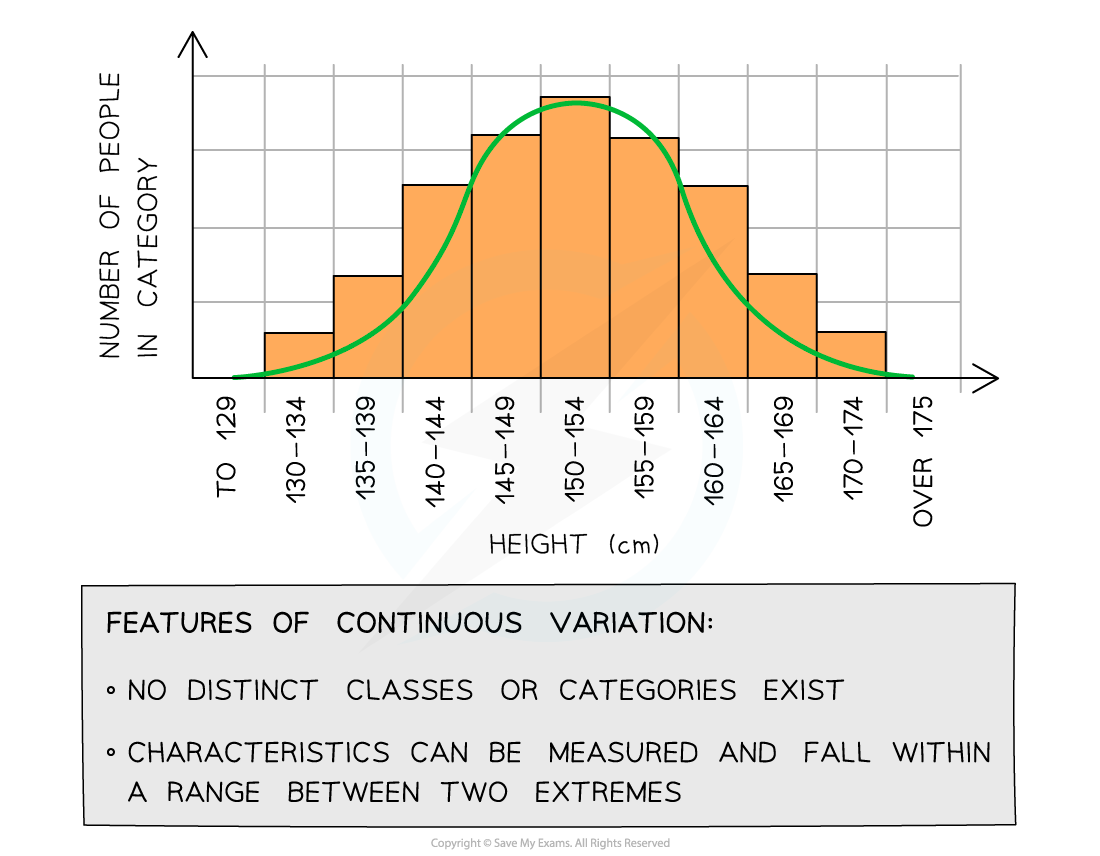Variation (OCR GCSE Biology A (Gateway)): Revision Note
Exam code: J247
Continuous & Discontinuous Variation
Variation is defined as differences between individuals of the same species
Phenotypic variation is the difference in features between individuals of the same species, resulting from:
The genome; differences caused by genes are known as genetic variation
Examples of genetic variation in humans include:
Blood group
Eye colour
Gender
Ability to roll tongue
Whether ear lobes are free or fixed
The interactions between the organism and its environment, this is known as environmental variation
Examples of environmental variation in humans include:
An accident may lead to scarring on the body
Eating too much and not leading an active lifestyle will cause weight gain
Being raised in a certain country will cause you to speak a certain language with a certain accent
A plant in the shade of a big tree will grow taller to reach more light
Phenotypic variation can be divided into continuous or discontinuous depending on how you are able to group the measurements
Continuous variation
Continuous Variation is when there are very many small degrees of difference for a particular characteristic between individuals
The data are arranged in order and can usually be measured on a scale
For example, height, mass, finger length etc. where there can be many ‘in between’ groups
Continuous features often vary because of a combination of genetic and environmental causes, for example:
Tall parents will pass genes to their children for height
Their children have the genetic potential to also be tall
However, if their diet is poor then they will not grow very well
Therefore, their environment also has an impact on their height
Plotting continuous data onto a graph will give smooth bell curves (a result of all the small degrees of difference)

Height is an example of continuous variation which gives rise to a smooth bell-shaped curve when plotted as a graph
Discontinuous variation
Discontinuous Variation is when there are distinct differences for a characteristic
Data fits into discrete categories with no crossover between categories
Discontinuous variation is usually caused by genetic variation alone
For example, people are either blood group A, B, AB or O; are either male or female; can either roll their tongue or not - there are no ‘in-betweens’
Plotting discontinuous data onto graphs will give a ‘step – like’ shape

Blood group is an example of discontinuous variation which gives rise to a step-shaped graph
Mutation & Variation
Variation occurs as the result of different alleles in the population
These allele variants are introduced into the gene pool as a result of mutations
Mutations are changes in the DNA base sequence and can impact the genome in several different ways
Some mutations make no difference to the resulting proteins
Others may make a difference to the protein but have no effect on the protein function
In some cases, mutations alter the protein significantly enough to impact the function of the protein
Only this third scenario would have an effect on the phenotype of the organism

Unlock more, it's free!
Did this page help you?